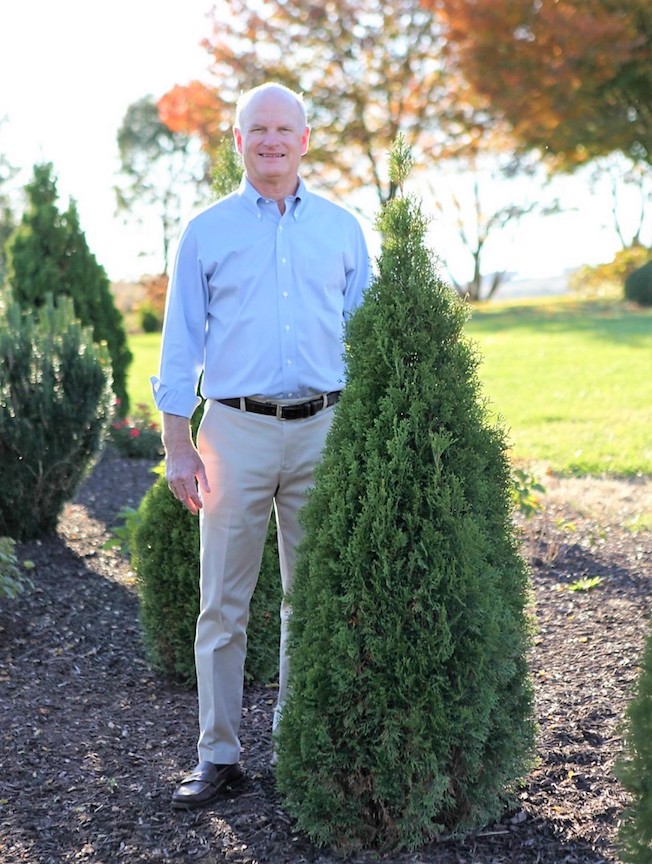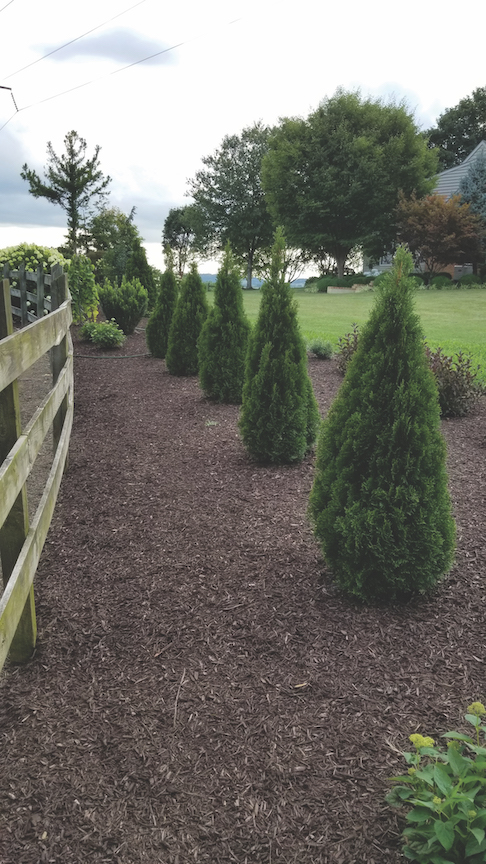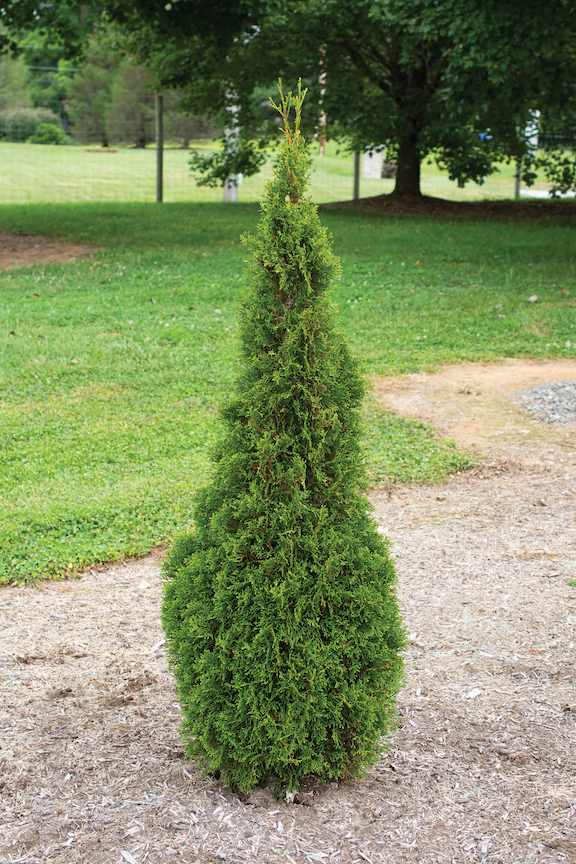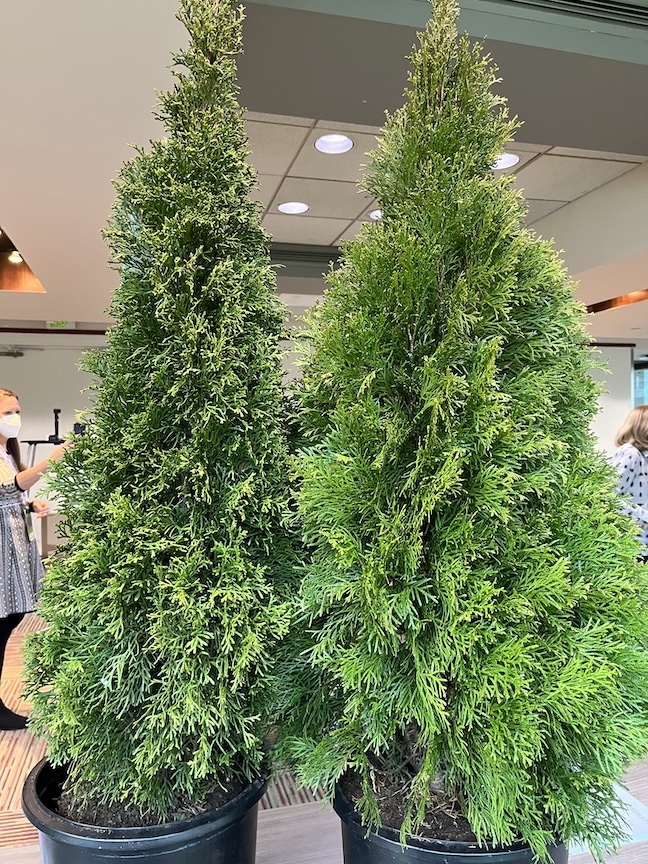
Gardening Green with Doug
Pulling Back the Curtain on New Plant Introductions
By Doug Oster
January 26, 2022
Each season, gardeners anticipate the latest introductions released to the gardening world, hoping for something new which will work in their treasured landscapes — something that no one else has seen yet.
The plants are often debuted at the Mid Atlantic Nursery Trade Show (MANTS) in Baltimore. But how do these plants make their way to market?
‘Emerald Squeeze’ arborvitae (Thuja occidentalis 'Lilshreckthu') was shown for the first time recently at MANTS 2022. This is how it began its journey towards garden centers, with a discovery over a quarter of a century ago.
The 'Emerald Squeeze’ Arborvitae Story
Danny Shreckhise bought his family’s nursery in 1977 — a storied business dating back to the 1800’s. Located in the beautiful central Shenandoah Valley of Virginia in a little town called Mount Sidney, he focused the operation on nursery production.
One day he noticed an arborvitae that looked different than the standard variety sold and planted across the country for decades. The mainstay is Thuja occidentalis 'Smaragd' or 'Emerald Green' (American Arborvitae), a semi-dwarf, evergreen columnar shrub, which when mature, tops out around 12 to 14 feet and spreads three to four feet wide.
The plant Shreckhise discovered years ago was more compact than ‘Smaragd’ (the word translates to emerald), only reaching a little over eight feet tall after 20 years, but it was just about as wide. “Whenever we see something different at the nursery, we always pull it aside,” he says. “Every year you look at it, you say, that’s pretty cool.”
Most go by the wayside, not proving themselves to be spectacular enough to warrant a new introduction. After spending years with the plant, he realized that it grew as fast as ‘Smaragd’ but also stayed small.
He was certainly aware of the tree through the seasons, but running the day-to-day operations of a nursery is demanding and even though the diminutive tree was interesting, it remained unknown to most people outside the nursery.
It was my son who really pushed me with this plant,” the elder Shreckhise added with a smile. “Dad you need to do something with this plant,” son told father.
Shreckhise had a long-term relationship with Star Roses and Plants (formally Conrad-Pyle). He decided to show them this unique cultivar to see what they thought and the ball started rolling. “This is really our only introduction, I really have trust in those folks,” he says about the company. “I had that comfort level with Star Roses.”
Identifying Opportunities
When Kristen Pullen, woody ornamental product manager for the company saw the plant, she realized the possibilities, as trends have continued to skew towards smaller plants in the home garden.
Pullen oversees many of the trials of 600 to 800 different plants a year, searching for a horticultural star. They could come from a backyard breeder, an esteemed university, wholesale nursery or somewhere else completely different.
“It’s a long process," she says of getting to the introduction stage, "and it depends on the genus as to how long it’s going to take.”
For instance, something like a butterfly bush might be available in three seasons, but an arborvitae can take an initial five or six to trial and then another three to four to produce enough shrubs to offer to the public.
Five-hundred of the Emerald Squeeze plants were sent to Star’s hardiness partners across the country to see how it reacts to different climates and conditions. Simultaneously, plants were sent to places called rooting stations that will make more plants when the time is right. They are told how many are needed and in turn inform Star Roses on how long it will take to have that number of plants ready.
Trial plants are also grown alongside other similar varieties already in commercial cultivation to judge performance.
When the data is ready, Pullen reviews the results and then takes her case to a decision committee when she’s convinced the plant, like ‘Emerald Squeeze,' is right for introduction. It’s not all about science though. She sometimes has a gut feeling as to what will and won't work.
The commitee all meet in the same room — from the president of the company to at least on member of each department, including sales, marketing, head grower, plant sourcing, trial manager and others who will listen to her pitch.
When she is done, Pullen often asks, “Based on your industry experience, what do you think?”
They can decent, she says, but allow her a chance to send it out of house to a few other experts to get their opinion.
“They trust me," she says smiling, "but sometimes say no. I think that’s healthy.”
Patience is key she adds, even when over the moon about a plant, this is a big decision.
“What we value is that trialing," Pullen says. “We don’t want to run to market with something that’s only been tested or seen in one area.”
When looking at the botanical name of Emerald Squeeze, you can see the reference to its namesake, who discovered the plant as it’s called 'Lilshreckthu.'
For Shreckshine, he just wants the plant to be embraced by growers big and small.
“Really, I hope for it to be a real contribution to the nursery and landscape business," he says proudly. “You get to point in life where enough’s enough. What you really want to see is something good out there that everyone in the industry and the homeowner can enjoy.”





Leave A Comment